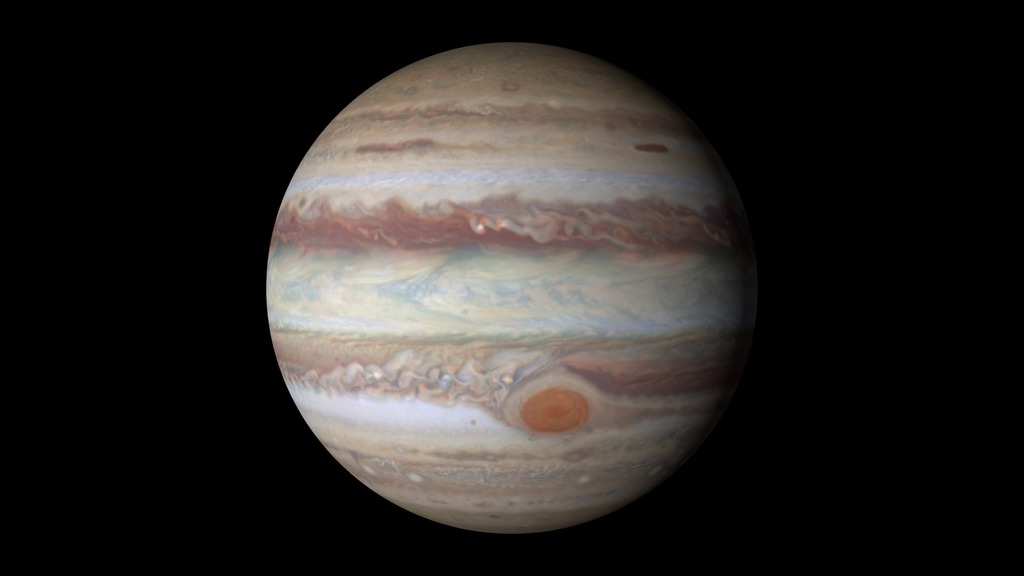Waves and Changes in Jupiter's Atmosphere
The movement of Jupiter’s clouds can be seen when comparing these two global maps, in which Jupiter’s cloud bands are laid out as a flat projection. Scientists produced these maps of Jupiter using Hubble Space Telescope observations for the Outer Planet Atmospheres Legacy program taken on January 19, 2015, from 2:00 UT to 12:30 UT and from 15:00 UT to 23:40 UT.
In Jupiter’s North Equatorial Belt, Hubble imaged an elusive wave that had been spotted on the planet only once before, decades earlier, by Voyager 2. In Voyager’s images, the wave is barely visible, and nothing like it was seen again until the recent Hubble observations. In the Hubble images, the wave appears as nearly vertical lines passing through the top of the dark, central cloud belt. The wave was found traveling in a region dotted with cyclones and anticyclones. Similar waves—called baroclinic waves—sometimes appear in Earth’s atmosphere where cyclones are forming. The wave may originate in a clear layer beneath the clouds, only becoming visible when it propagates up into the cloud deck.
For More Information
Credits
Please give credit for this item to:
NASA's Goddard Space Flight Center
Space Telescope Science Institute
-
Animator
- Pam Jeffries (STScI)
-
Writer
- Ray Villard (STScI)
-
Scientist
- Amy A. Simon (NASA/GSFC)
Missions
This page is related to the following missions:Release date
This page was originally published on Monday, September 25, 2017.
This page was last updated on Wednesday, May 3, 2023 at 1:47 PM EDT.
